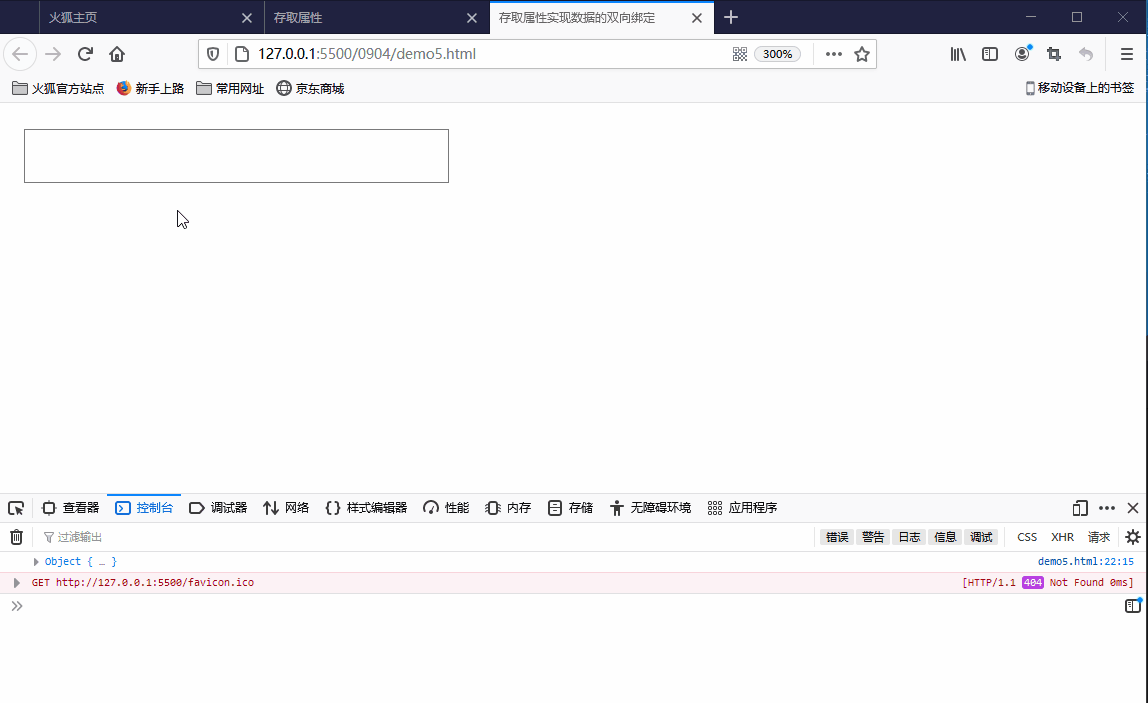类成员与类继承
一、类表达式
//类表达式let PersonClass = class {//构造方法constructor(name) {this.name = name;}sayName() {return this.name;}};let person = new PersonClass("小丽");console.log(person.sayName());//类作为参数使用let createObj = function (className, ...args) {return new className(...args);};let obj = createObj(class {hello() {return "hello JS";}});console.log(obj.hello());//立即实例化一个类表达式,创建一个单例//(函数/类声明)(调用参数列表) 类的前面加newlet user = new (class {constructor(email) {this.email = email;}getEmail() {return this.email;}})("孙悟空");console.log(user.getEmail());

二、类的构造方法
class User {constructor() {console.log(this);return Object.create(null);}}const user = new User();console.log(user);

三、类的实例属性和原型属性
class User {constructor(id, name) {//实例属性:直接绑定到实例(this)上面的属性this.id = id;this.name = name;//实例方法this.getName = () => console.log("hello", this.name);}//原型方法show() {console.log(this.id, this.name);}}const user = new User(1, "admin");console.log(user);console.log(user.show());console.log(user.show());

四、存取属性
function User1(age) {this.age = age;}//公共方法或属性定义在函数的原型对象上User1.prototype.email = "admin@qq.com";console.dir(User1);const user1 = new User1();console.log(user1.email);//在User.prototype原型对象上设置"存取器属性"Object.defineProperty(User1.prototype, "verfiyAge", {get: () => this.age,set: (value) => {if (value >= 18 && value <= 60) this.age = value;},//configurable控制属性是否可配置configurable: true,//writable控制属性是否可直接修改//enumerable控制属性是否可被枚举出来/*1.writable只限制了能否直接赋值。2.configurable为false依然能直接修改属性的值。3.若writable和configurable都是false,则无法进行属性的修改。*/enumerable: true,});let user = new User1(30);console.log(user);console.log(user.age);console.log(user.verfiyAge);user.verfiyAge = 40;console.log(user.age);//对象的原型永远等于它的构造函数的原型对象,对象上从它的构造函数的原型对象上继承成员(属性和方法)console.log(user.__proto__ === User1.prototype);console.log(user.constructor);console.log(user.__proto__ === user.constructor.prototype);

五、存取属性实现数据的双向绑定小案例
<input type="text" /><p></p><script>const obj = {};Object.defineProperty(obj, "hello", {set(value) {document.querySelector("input").value = value;document.querySelector("p").innerHTML = value;},});document.addEventListener("input", function (ev) {obj.hello = ev.target.value;});console.log(obj);

六、静态成员
//静态成员的特征//1.不能被实例访问//2.不能被实例共享//3.必能通过类才可以访问//原生function User() {}//函数对象的静态成员就是函数的属性,直接添加User.site = "php中文网";User.say = () => `我是 "${User.site}" 的朱老师`;console.dir(User);console.log(User.hasOwnProperty("site"));console.log(User.hasOwnProperty("say"));console.log(User.hasOwnProperty("constructor"));console.log(User.hasOwnProperty("call"));console.log(User.hasOwnProperty("name"));//es6的类实现静态成员class UserClass {//原型方法hello() {return "欢迎大家来上我的课程";}//静态属性static position = "讲师";//静态方法static say() {return `我是一名:${UserClass.position}`;}}//访问原型方法console.log(new UserClass().hello());//访问静态成员console.log(UserClass.say());

七、类中的私有成员
//1.原生实现私有成员function User() {//私有成员:是函数中的私有变量/局部变量来充当let course = "es6编程";let hello = () => `大家一定要好好学习${course}课程`;this.say = () => console.log(hello());}new User().say();//2.es6实现类中的私有成员class UserClass {//1.私有属性#salary;constructor(salary = 0) {this.#salary = salary;}//私有属性应该设置getter.setter//getterget salary() {return this.#salary;}//setterset salary(value) {if (value < this.salary) console.log("禁止降薪,否则辞职");else console.log((this.#salary = value));}//私有方法#max(arr) {return Math.max(...arr);}//私有方法只能在类中用getMax(arr) {return this.#max(arr);}//静态私有属性static #hobby = "摄影";static #eat() {return "我爱吃肉";}static getHobby() {return UserClass.#eat() + "和" + UserClass.#hobby;}// 原型方法中访问静态成员getHobby() {return UserClass.#eat() + "哈哈, 和 " + UserClass.#hobby;}}const user = new UserClass(5000);console.log(user);console.log(user.salary);user.salary = 2000;user.salary = 3000;console.log(UserClass.getHobby());console.log(new UserClass().getHobby());

八、类的继承:原生
//原生是通过原型链来实现继承const obj = { name: "damin", age: 90 };//创建一个对象继承objconst newObj = Object.create(obj);console.log(newObj);console.log(newObj.__proto__.age === newObj.age);console.log(newObj.name, newObj.age);//1.父类function Vehicle(fuel, purpose) {this.fuel = fuel;this.purpose = purpose;}//公共/原型方法Vehicle.prototype.show = function () {return `燃料:${this.fuel}\n用途:${this.purpose}\n`;};console.dir(Vehicle);//2.子类function Car(fuel, purpose, color) {Vehicle.call(this, fuel, purpose);this.color = color;}//关键代码//更新当前子类的原型对象,这样才能实现真正意义上的继承Car.prototype = Object.create(Vehicle.prototype);//手工补上constructorCar.prototype = Car;//子类中重写父类的原型方法Car.prototype.show = function () {return Vehicle.prototype.show.call(this).concat(`颜色:${this.color}\n`);};//实例化子类const car = new Car("汽油", "家用", "白色");console.log(car.show());console.dir(Car);

九、es6中的类继承
//父类class Vehicle {constructor(fuel, purpose) {this.fuel = fuel;this.purpose = purpose;}//原型方法show() {return `燃料:${this.fuel}\n用途:${this.purpose}\n`;}}//子类class Car extends Vehicle {constructor(fuel, purpose, color) {//调用父类的构造方法//super()必须是第一条,否则不能正确生成子类的thissuper(fuel, purpose);this.color = color;}//重写父类的原型方法show() {return super.show().concat(`颜色:${this.color}\n`);}}//super://1.当成函数:super()代表父类的构造方法,必须用在子类的构造方法中的第一行//2.当成对象:super用在原型方法/静态方法,代码父类的原型对象//实例化子类const car = new Car("新能源", "出租车", "蓝色");console.log(car.show());

学习总结
1.类表达式
类表达式是用来定义类的一种语法。和函数表达式相同的一点是,类表达式可以是命名也可以是匿名的。如果是命名类表达式,这个名字只能在类体内部才能访问到。JavaScript 的类也是基于原型继承的。
语法
const MyClass = class [className] [extends] {// class body};
类可以作为参数使用
可以立即实例化一个类表达式,(函数/类声明)(调用参数列表) 类的前面加new
2.类的构造函数
constructor是一种用于创建和初始化class创建的对象的特殊方法。在一个类中只能有一个名为 “constructor” 的特殊方法。
在一个构造方法中可以使用
super关键字来调用一个父类的构造方法。如果没有显式指定构造方法,则会添加默认的 constructor 方法。
如果不指定一个构造函数(
constructor)方法, 则使用一个默认的构造函数(constructor)。
3.类的实例属性和原型属性
实例属性:直接绑定到实例(
this)上面的属性原型属性:绑定在原型(
prototype)上的属性
4.存取属性
get语法将对象属性绑定到查询该属性时将被调用的函数。get关键字可在对象内部使用,可为此对象创造一个伪属性
在我们调用这个方法时,可以像访问对象的属性一样,不用加括号,就可以执行此方法,而这个方法会返回一个数,所以我们可以用get关键字为此对象创造一个伪属性。并且这个伪属性只可读,不可写。
只需使用
delete,就可删除getter使用
Object.defineProperty()在现有对象上定义getterset关键字与get关键字的区别是,用set时,必须有且仅能有一个参数,而用get时,不能有参数。否则将会报错。并且,用set时,只能赋值,而不能取值通过get和set配合,对同一属性操作,就可以完成对实例对象赋值的权限的控制。由set,get关键字的特性可知,只有set,get同时用,才可以对同一属性进行存取。
5.静态成员
静态成员的特征
1.不能被实例访问2.不能被实例共享3.必能通过类才可以访问
函数对象的静态成员就是函数的属性,直接添加
类(class)通过
static关键字定义静态方法静态方法调用同一个类中的其他静态方法,可使用
this关键字非静态方法中,不能直接使用
this关键字来访问静态方法。而是要用类名来调用
6.类中的私有成员
原生
- 私有成员:是函数中的私有变量/局部变量来充当
es6实现类中的私有成员
私有实例字段使用
#名称(发音为“哈希名称”)声明,这些名称以#开头。 #是名称本身的一部分, 声明和访问时也需要加上从作用域之外引用
#名称是语法错误私有字段可以被类的构造方法(constructor)从内部声明
七、类的继承:原生
原生是通过原型链来实现继承
创建一个对象来继承
八、es6中的类继承
extends关键字用于类的继承super()调用父类的构造方法super()必须是第一条,否则不能正确生成子类的thissuper的两种应用场景:
1.当成函数:
super()代表父类的构造方法,必须用在子类的构造方法中的第一行2.当成对象:
super用在原型方法/静态方法,代码父类的原型对象

